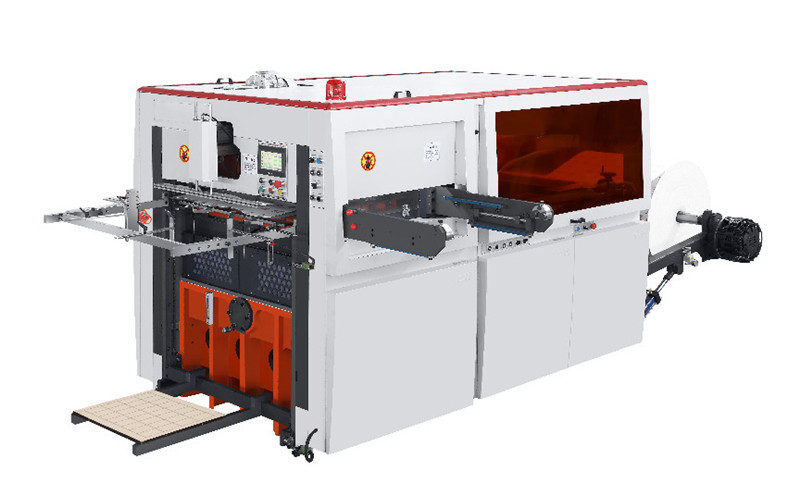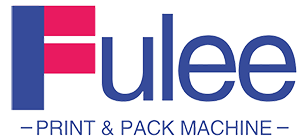Working principle of die cutting machine :
The working principle of the die-cutting machine is to use steel knives, hardware molds, steel wires (or stencils carved from steel plates) to apply a certain pressure through the embossing plate to cut the printed products or cardboard into a certain shape.
If the entire printed product is press-cut into a single graphic product, it is called die-cutting;
If the steel wire is used to stamp out marks on the printed product or leave a bent groove, it is called an indentation;
If using two yin and yang templates, by heating the mold to a certain temperature, a pattern or font with a three-dimensional effect is hot stamped on the surface of the printed product, which is called hot stamping;
If one kind of substrate is laminated on another kind of substrate, it is called lamination;
Excluding the rest except the genuine product is called waste disposal;
The above can be collectively referred to as die cutting technology.

Die-cutting and indentation technology
Die-cutting and indentation is an important production process in post-press processing. It is suitable for the finishing of all kinds of printed materials. The quality of die-cutting directly affects the market image of the entire product. Therefore, only the traditional die-cutting and indentation technology can be mastered. The research and development of new die-cutting technology can effectively enhance the competitiveness of printing enterprises.
Die-cutting and indentation technology is a comprehensive term for two processing technologies, model-based indentation and template-based pressure-cutting. The principle is that in the finalized mold, the pressure is applied to cause the printing carrier paper to be compressed and deformed. Or break and separate.
The main parts of die-cutting and creasing equipment (referred to as die-cutting machine) are die-cutting plate table and press-cutting mechanism. The processed sheet is in between these two, finishing technical processing of die-cutting under pressure.
Die-cutting and creasing plates have different types and corresponding pressure-cutting mechanisms, so that the die-cutting machine is divided into three basic types: flat flat type, round flat type and round flat type.
The flat die-cutting machine can be divided into two types, vertical and horizontal, because of the difference in the direction and position of the plate table and platen.
Flat die-cutting machine
The shape of the plate table and press-cutting mechanism of this die-cutting machine is flat. When the plate table and the platen are in the vertical position, it is a vertical flat die-cutting machine.
When the die-cutting machine is working, the pressure plate is driven to the plate and presses the plate table. The different motion trajectories of the pressing plate can be divided into two categories:
One is that the pressure plate swings around a fixed hinge, so at the moment of the start of molding, there is a certain inclination between the working surface of the pressure plate and the stencil surface, so that the die-cutting plate will cut into the lower part of the cardboard earlier, which will easily cause excessive pressure on the lower part of the stencil. The phenomenon that the upper part is not completely cut through. In addition, the component of the die-cutting pressure will also cause the lateral displacement of the cardboard.
When the die-cutting machine with another press plate motion mechanism is in operation, the press plate is driven by the connecting rod, and first swings on the flat guide rail of the machine base with the cylindrical roller as the fulcrum, and the working surface of the press plate is changed from inclination to the molded plate. In the parallel position, press the die-cutting plate in parallel with translation.
The vertical flat die press has the advantages of simple structure, convenient maintenance, easy to master its operation and replacement of die-cutting indentation plates, but it is labor intensive and low in production efficiency. The number of work per minute is more than 20-30 times. Often used in small batch production.
Both the plate table and the working surface of the platen of the horizontal die-cutting machine are in a horizontal position, and the plate below is driven by the mechanism to press up to the plate table for die-cutting and indentation.
Due to the small stroke of the pressure plate of the horizontal die-cutting machine, it is more difficult to manually put in or take out the cardboard, so it usually has an automatic paper feeding system. Its overall structure is similar to that of a sheet-fed offset printing machine. The whole machine is automatically made of cardboard. It is composed of input system, die cutting part, cardboard output part, electrical control, mechanical transmission and other parts, and some also have automatic cleaning device.
The horizontal die-cutting machine is safe and reliable, and its degree of automation and production efficiency are relatively high. It is an advanced model of the flat die-cutting machine.
Circular die cutting machine
The working parts of the plate table and the press-cutting mechanism of the circular die-cutting machine are both cylindrical. When working, the paper feed roller sends the cardboard between the mold plate cylinder and the pressure roller, and the two clamp them When die-cutting the drum, the die-cutting plate drum rotates once, which is a working cycle.
The die-cutting method of the circular die-cutting machine is generally divided into two types: cutting method and soft cutting method:
The hard cutting method means that the knife is in hard contact with the surface of the pressure roller during die cutting, so the die cutting knife is easier to wear;
The soft cutting method is to cover a layer of engineering plastic on the surface of the pressure roller. When die cutting, the cutter can have a certain amount of cutting, which can protect the cutter and ensure complete cutting, but the plastic layer needs to be replaced regularly.
Because the drum continuously rotates when the circular die-cutting machine is working, its production efficiency is the highest among all types of die-cutting machines. However, the die-cutting plate has to be bent into a curved surface, which is troublesome and costly, and it is technically difficult. Circular die-cutting machines are often used in mass production.
At present, most advanced die-cutting equipment is developing towards a fully automatic combination of printing and die-cutting. The production line of die-cutting machinery and printing machinery is composed of four main parts, namely the feeding part, the printing part, the die-cutting part, and the sending part. Wait.
The feeding part feeds the cardboard into the printing part intermittently, and can be adjusted conveniently and accurately according to different material forms, sizes, types, etc. The printing part can be composed of 4-color-8-color printing units, and different methods such as gravure, offset, flexo, etc. can be used. This part has more advanced printing functions and is equipped with its own automatic drying system.
The die-cutting part can be a flat die-cutting machine or a round die-cutting machine, and both are equipped with a waste removal device, which can automatically remove the corner waste generated after die-cutting.
The conveying part collects, organizes and sends out the products after the die-cutting process is completed, so as to ensure that the printing part and the die-cutting part of the feeding part can smoothly realize high-speed continuous operation.
With the improvement of the technical level in recent years, the price of circular die-cutting equipment has been significantly reduced, and currently has a wide range of user groups in China.
Roll Die Cutting Machine
The roll paper die-cutting machine has the round pressing type and the flat pressing type.
Flat-bed roll paper die-cutting machine is a machine that performs die-cutting and creasing by roll paper feeding. It has two modes: wired externally and on-line.Off-line processing is to use a printing machine to print the cardboard roll, and then put the roll paper rewound on the roll machine on the paper feed frame of the die cutting machine for die cutting and indentation processing. The characteristic of the off-line processing method is that the printing machine and the die-cutting and creasing machine are not connected, and they are not restricted to each other. The printing machine can be adjusted and printed with multiple die-cutting machines to cooperate with the printing machine, or increase the start-up time of the die-cutting and creasing machine;
The in-line processing method is to connect the die-cutting machine and the printing machine to form an intermodal machine, starting from the roll paperboard, using a printing, die-cutting and creasing process for production. This method can reduce the number of operators. However, the speed of the general printing machine is higher, and the speed of the die-cutting and creasing machine is lower. The two speeds cannot be matched. The speed of the printing machine can only be reduced. It is impossible to increase the speed of the die-cutting and creasing machine. Production efficiency is affected.
Post time: Mar-30-2020



